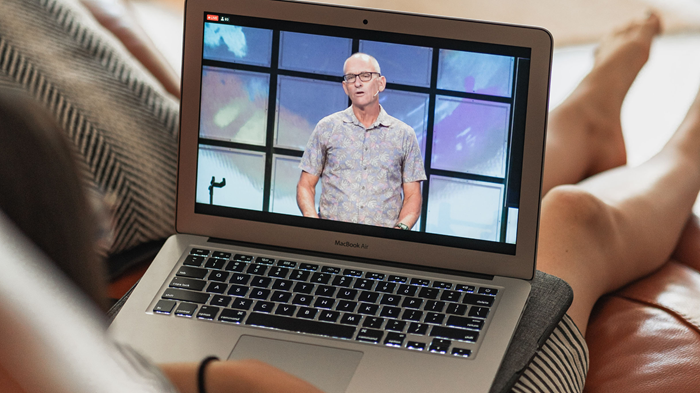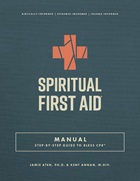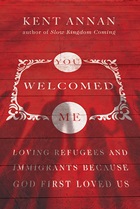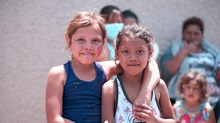The Place of Technology in Churches Moving Forward

It is significant that many churches that once eschewed technology are now using it regularly during the COVID-19 pandemic. Further theological reflection aside, what impacts will the ways we use technology now have on the church over the years to come? To find out more, we interviewed Dr. Heidi A. Campbell and Sophia Osteen of the Network for New Media, Religion, and Digital Culture Studies about their research on digital ecclesiology during and after COVID-19.
Dr. Heidi A. Campbell is a professor of Communication at Texas A&M University and is Director of the Network for New Media, Religion, and Digital Culture Studies. She has studied religion and the internet for over two decades. She has published nine print books and three ebooks. Her forthcoming ebook is Digital Ecclesiology: A Global Conversation.
Sophia Osteen graduated from Texas A&M University in 2020 with a degree in Psychology and a minor in Public Health. Currently, she works as a Research Assistant for Dr. Campbell and will be pursuing her doctorate in Clinical Psychology in the fall. Sophia's most recent co-publication with Dr. Campbell is entitled "Summarizing Heidi A Campbell's Research on Religion and Church Online" (2020).
This is part two of our two-part interview with Dr. Heidi A. Campbell and Sophia Osteen. You can find the previous installment of the series here.
KA: How might readers apply what you found to their lives?
HC & SO: Our research and key takeaways provide incredible insight into the simultaneous benefits and difficulties of moving church online. Our hope is that church leaders and pastors can learn from this research and use it to make their transitions from an offline church to an online church smoother. This global shift from offline to online church environments was daunting for most leaders. Our goal in publishing this research is for it to inspire church leaders; although the shift online was necessary and at times unnerving, if done correctly and meaningfully, it can be done in a way that makes lasting changes.
JA: How can readers use what you found to help others?
HC & SO: Our goal with all of our work, but especially with The Distanced Church, is to provide accessible research and free resources to those who may not otherwise have access to cutting edge insights and timely advice. We are in an unprecedented time in our world and, for churches, we believe the summary report provides a concise overview of key takeaways that can serve as a starting point for serious reflection on how churches can and should engage digital technology during times of crisis. We also hope those who are having to make the difficult and stressful decisions about how to move forward with their church services can be equipped to do so in ways that are informed, wise, and practical.
We are in a technological world that many years ago, we could have never dreamed of. We believe it is crucial for the church to learn the best strategies for creating links between the church and the internet. Technology is a helpmate to churches, but it is also one that requires serious theological reflection and conversation.
KA: If you could say something to churches considering reopening, what would it be?
HC & SO: We would ask them to reflect on why they feel the need to reopen at this time. What have you learned about the mission and culture of your church from being online? What aspects of church and Christian community can be done online, and might even cultivate community building in new ways? What aspects are missing in mediated worship, and how could they be enhanced during face-to-face worship? Could the future of the church be a new hybrid form of worship or combination of online-offline worship? The answers to these questions are important, require serious consideration, and should shape how churches move towards reopening.
Also, one of the Barna Group’s recent surveys found that one in three self-described practicing Christians have not been engaged in church since the start of the pandemic. Also, less than 50 percent of regular church attendees took part in online worship offerings. There is a story behind these statistics that needs to be explored and might help us understand what this will mean for the future of the church.
JA: What are you currently working on related to COVID-19 that you would like to share?
HC & SO: We are currently working on publishing an ebook about digital ecclesiology and online church entitled Digital Ecclesiology: A Global Conversation, which is forthcoming later this summer in 2020. In the ebook, we talk with Protestant and Catholic theological voices about how moving online creates distinctive theological challenges, especially related to issues of liturgy, church praxis, and mission. What kind of spiritual and scriptural reflection is needed to help make wise decisions about media technologies and church worship in a digital age?
When many churches had to abruptly make the move from an offline platform to an online platform during the COVID-19 pandemic, the choices made created new forms of community practice that had many theological implications church leaders may have not, and in many cases still have not, considered. Our goal in gathering these essays and publishing Digital Ecclesiology was to amplify a wide variety of voices—female and male, non-western and western—that are seriously engaged in the emerging field of “digital theology.” The end product will be a two-volume set of fascinating essays about both the ecclesiological opportunities and challenges that will shape the church far beyond this pandemic and will require long-term reflection about how what is done now will shape the future of religion.
Follow the Network for New Media, Religion and Digital Culture Studies on their website, Facebook, and Twitter.
Article Reference: Campbell, Heidi; Osteen, Sophia (2020). Overview Report of Key Findings From The Distanced Church. Available electronically from http : / /hdl .handle .net /1969 .1 /187968.
This post originally appeared at reopeningthechurch.com.
The Better Samaritan is a part of CT's
Blog Forum. Support the work of CT.
Subscribe and get one year free.
The views of the blogger do not necessarily reflect those of Christianity Today.






















